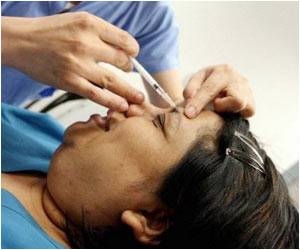Scientists in Scotland have developed a light-emitting sticking plaster, which they claim will cure skin cancer. Human trials have been conducted successfully. This user-friendly device, which can be used by the patients themselves at home, consists of a portable light source that is powered by a pocket-sized battery.
Physicist Professor Ifor Samuel and dermatology consultant Professor James Ferguson took 4 years to create this device. The portability of the device makes the patients do their routine work even while under treatment.Professor Samuel, of the University of St Andrews, said: "By adapting the latest technology to an existing treatment method, we have developed a compact light source for treating common skin cancers. It can be worn by the patient in a similar way to a sticking plaster, while the battery is carried like an iPod."
Organic light-emitting diode (OLED) produces the light. It is a by-product of Prof. Samuel’s efforts on advanced displays.
He said: "It is very exciting to be have developed a new technology that helps treat skin cancer patients."
The instrument is based on photodynamic therapy (PDT). In this, a light source activates a photosensitive drug that kills the cancerous cells. PDT has several advantages over surgery. There is no scarring of the skin, pain is less as a lower level of light is used and there is no need for hospitalization.
Photobiologist Professor Ferguson, of Ninewells Hospital, Dundee, said: "This new device will have a major impact on the treatment of skin cancers. The light emitting patch is a low cost, portable and convenient method of treatment.
Advertisement
"Using red light to treat skin cancer is a standard form of therapy but what we have done is take it out of the hospital setting into the home.
Advertisement
"We hope it could be widely available within about two years, freeing up nursing and doctor time - and hospital car parks."
"The introduction of this product will mean that more patients can be treated, and opens up the possibility of treatment at GPs' surgeries or at home," say the researchers.
Scottish Enterprise Proof of Concept funding aided the development of this patented product and Lumicure Ltd has the license.
Skin cancer is estimated to affect nearly 10% of the people in Scotland. According to the researchers, the device is useful not only in treating skin cancer, but it also can be used in the cosmetic industry to treat acne and in anti-aging therapies.
Source-Medindia
GYT











